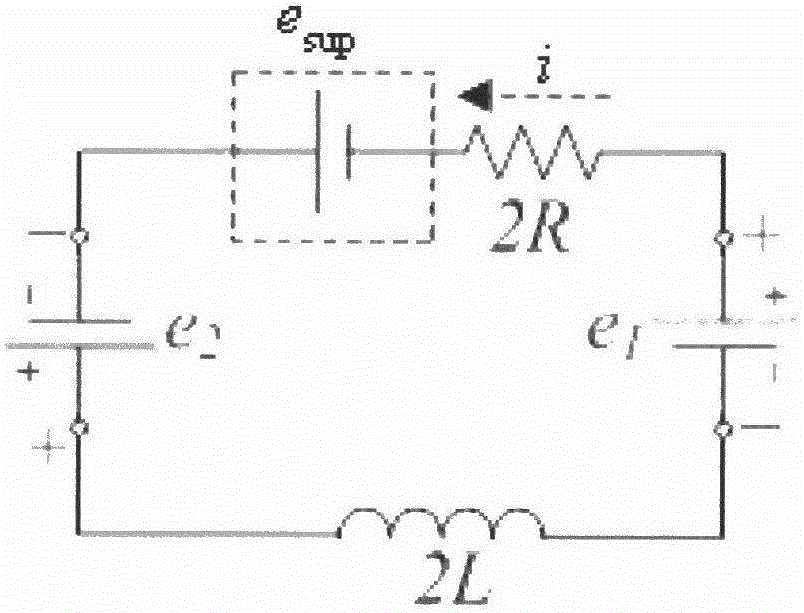Dual limb mirror motion training equipment
A sports training and mirroring technology, applied in sports accessories, muscle training equipment, passive exercise equipment, etc., can solve the problems of not ensuring the full use of the active movement ability of the patient part, patient discomfort, and reducing the intelligent type of equipment, etc. Portable rehabilitation training application, the effect of increasing flexibility and naturalness, reducing equipment size and weight
- Summary
- Abstract
- Description
- Claims
- Application Information
AI Technical Summary
Problems solved by technology
Method used
Image
Examples
Embodiment 1
[0022] passive-active training
[0023] The movement of the joints of the healthy limb drives the main motor (the subscript 1 is used in the text to represent the components of the main mechanism) to rotate, and the motor works in the power generation state and generates a certain amount of electric energy, that is, the main mechanism does not need energy supply, and the energy compensation module only needs to supply energy to the slave mechanism Provide electric energy, and the electric energy generated by the main motor is provided to the slave motor. By controlling the power output of the energy compensation module, the slave motor (the subscript 2 is used in the text to represent the components of the slave mechanism) repeats the rotation movement of the master motor, and then the slave mechanism drives The affected joint repeats the movement of the healthy joint.
[0024] based on figure 1 As shown, the voltage balance equation of the closed-loop circuit is:
[0025] ...
Embodiment 2
[0034] active-assisted training
[0035] The active forces of the joints of the healthy limb and the joints of the affected limb respectively drive the master and slave motors to rotate, and both motors work in the power generation state. Based on the left-right symmetrical master mechanism and slave mechanism, when the force directions of the two limb joints are mirror images, the torque directions of the master and slave motors are opposite (one is forward torque, and the other is reverse torque), because the power terminals of the two motors connected in reverse, the corresponding voltage equivalent circuit as figure 2 As shown, the two electromotive forces are respectively provided as the same direction / auxiliary voltage to the contralateral mechanism, which reduces the loop current and the braking torque of the contralateral motor, thereby reducing the force burden on the corresponding limb joints. At this time, the output of the energy compensation module is used to ba...
Embodiment 3
[0044] active-resistance training
[0045] In this training mode, the movement of the joints of the healthy limb and the joint of the affected limb is a mirror image antisymmetric relationship. The active force of the two joints drives the motors of the master mechanism and the slave mechanism to rotate respectively, and both motors work in the power generation state. Based on the left-right symmetric master mechanism and the slave mechanism, when the force direction of the joints of the two limbs and the anti-symmetry of the mirror images of the corresponding joints, the torque directions of the master and slave motors are the same (both are forward torque or reverse torque). The motor power supply terminal is connected in reverse, and the corresponding voltage equivalent circuit is as follows image 3 As shown, that is, the two electromotive forces are respectively provided as reverse voltages to the contralateral mechanism, which increases the loop current and the braking t...
PUM
 Login to View More
Login to View More Abstract
Description
Claims
Application Information
 Login to View More
Login to View More - R&D
- Intellectual Property
- Life Sciences
- Materials
- Tech Scout
- Unparalleled Data Quality
- Higher Quality Content
- 60% Fewer Hallucinations
Browse by: Latest US Patents, China's latest patents, Technical Efficacy Thesaurus, Application Domain, Technology Topic, Popular Technical Reports.
© 2025 PatSnap. All rights reserved.Legal|Privacy policy|Modern Slavery Act Transparency Statement|Sitemap|About US| Contact US: help@patsnap.com



